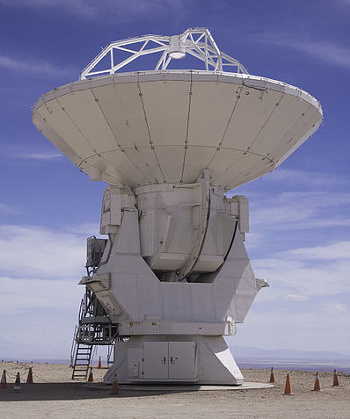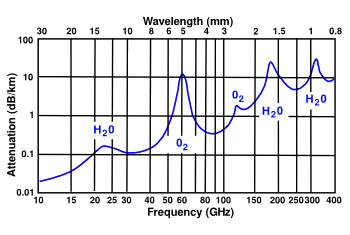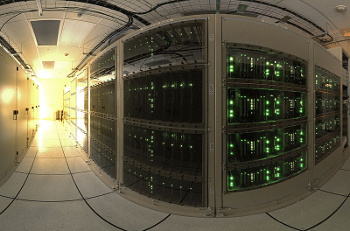Atacama Large Millimeter Array
March 27, 2013
The
deserts of
western South America contain some unusual
archaeological artifacts. These are huge
geoglyphs, which are
drawings either scratched into the desert
sands (a negative geoglyph), or built up from
rocks (a positive geoglyph).
These became a topic of
popular culture in the late
1960s with publication of the book, "
Chariots of the Gods?," by
Erich von Däniken (
Putnam, 1968). The theme of this book is that there are
historical and
religious records of visits by
extraterrestrials. The book attracted significant public interest, since it was published at the start of the
Space Age, and more than ten million copies were sold.
Von Däniken argued that since geoglyphs, such as the
Nazca lines in
Nazca,
Peru, can only be appreciated from a high altitude, they were built to be viewed by the extraterrestrial "gods" in their
spacecraft. It makes a nice story, but
scientists don't see much merit in this
conjecture.
Just
south of the Nazca geoglyphs are their cousins in the
Atacama Desert of
Chile, including the
Atacama Giant, as shown below. This geoglyph, which is about 120
meters in longest dimension, is thought to have been an
astronomical calendar based on the setting
Moon.
Astronomy is continuing at the Atacama Desert with the recent commissioning of the US $1.3-1.4 billion
Atacama Large Millimeter Array (ALMA), a new
radio telescope.[1-6]

A drawing of the Atacama Giant, looking like an emoticon for "Bad Hair Day."
As a search of satellite imagery will demonstrate, this is an accurate representation.
(Modified Wikimedia Commons image.)
There are many radio telescopes in the world, so why build another, and why place it in the desert? The clues are in its name. First, there the
millimeter part, which refers to the operating
wavelength. The
first radio telescope, built by
Karl Jansky, operated at a
frequency of 20.5
MHz, corresponding to a wavelength of about 14.6 meters. Using the familiar conversion formula of wavelength
λ into frequency
ν,
ν = c/λ,
in which
c is the speed of light, shows that a wavelength of one millimeter corresponds to a frequency of about 300
GHz. That's more than 10,000 times higher an operating frequency than Jansky's telescope, and far above the common
frequency bands, as shown in the table.
| Band Designation | F (GHz) | |
Band Designation | F (GHz) |
| L | 1-2 | |
Ku | 12-18 |
| S | 2-4 | |
K | 18-27 |
| C | 4-8 | |
Ka | 27-40 |
| X | 8-12 | |
V | 40-75 |
The highest frequency devices most people will encounter are
Wi-Fi equipped
computers that now operate as high as 5 GHz, and potentially at 60 GHz.
Direct-broadcast satellite equipment receives signals slightly above 12 GHz (K
u-band). The highest frequency with which I've had practical experience is
X-band, the operating frequency of an
electron paramagnetic resonance spectrometer I helped construct as an undergraduate.
Microwave ovens for the home operate at 2.45 GHz.
Why have a radio telescope operate at such small wavelengths? Smaller wavelength gets you better
angular resolution for the same size
dish antenna; provided, however, that the dish surface is smooth to that wavelength. Instead of a single, large dish antenna, ALMA is designed to have a sixty-six, fifty-seven of which were operational on opening day, March 13, 2013.[1] These antennas range in diameter from 7-12 meters and have a surface accuracy of better that 25
micrometers.[3] When the antenna signals are combined, ALMA acts as if it were a 16
kilometer (10
mile) wide telescope.[3]

The first antenna placed at ALMA.
The 100 ton antennas are movable, so the antenna array can be reconfigured for different observations. They are moved by two 28-wheel transporters.
(ALMA/ESO/NAOJ/NRAO photo, Creative Commons Attribution 3.0 licensed, via Wikimedia Commons.)
Most people are familiar with the iconic
Very Large Array (VLA) radio telescope, near
Socorro, New_Mexico. It was the setting for the opening
scene of the
film,
2010, and several other films. The angular resolution of ALMA, 10
milliarcseconds, is ten times better than that of the VLA, and it has twenty times the
point source detection sensitivity of the VLA.
Now, the question of why site ALMA at a desert plain in the middle of nowhere. It's another consequence of the millimeter operating wavelength.
Radio astronomers, like their
optical astronomer colleagues, are sometimes defeated by
Earth's atmosphere. The atmosphere is generally transparent to
radio waves above 50 MHz, where the
ionosphere can be ignored.
Absorption from
water vapor and
atmospheric gases becomes important, however, at much higher frequencies. (see figure).

Average atmospheric absorption of mm radio waves at sea level (20°C, 1013.24 millibar, water vapor density 7.5 g/m3.
Fig. 5.1 of ref. 7, redrawn for clarity.[7]
(click for larger image.)
Not only is the ALMA site in the Atacama Desert, which is naturally dry, it's also on a plateau at a 5,000 meter (16,400 foot)
altitude that puts it above much of Earth's atmosphere.[1-3,6] The observatory building is apparently the second highest building on Earth, surpassed only by a
train station in
Tibet.[1-3] The air is so rarefied that the astronomers must pass a
medical screening to work there, and they sometimes need
supplemental oxygen.[1,3]
The
digital combination of signals from so many separate antennas to give the equivalent resolution of a single, large antenna is no mean feat. It requires 17 quadrillion calculations per second,[3] all done on a highly
parallel supercomputer called the Alma correlator, as shown in the photograph. These calculations are only possible if the signals from the antennas are synchronized to a
picosecond.[6]

On quadrant of the ALMA correlator.
The correlator has 134 million processors.
(ESO image, Creative Commons Attribution 3.0 license.)
![]()
References:
- Vladimir Hernandez, "Alma telescope: Ribbon cut on astronomical giant," BBC News, March 13, 2013.
- Hayley Dixon, "£1 billion telescope can see the beginning of time," Telegraph (UK), March 13, 2013.
- Clara Moskowitz, "ALMA telescope, the world's largest, will go deeper and farther than ever before," Christian Science Monitor, March 13, 2013.
- World's largest ground-based telescope opens in Chile, The Engineer, March 14, 2013.
- Eric Hand, "Radio astronomy: The patchwork array," Nature, vol. 495, doi:10.1038/495156a, (March 14, 2013), pp. 156-159 .
- David Cornish, "Alma telescope inaugurated as 50th antenna goes live," Wired (UK), March 13, 2013.
- Section 5 of Kevin R. Petty and William P. Mahoney III, "Weather Applications and Products Enabled Through Vehicle Infrastructure Integration (VII)," United States Department of Transportation - Federal Highway Administration Report No. FHWA-HOP-07-084, January 2007. Full report (36.5 MB PDF file).
Permanent Link to this article
Linked Keywords: Desert; West; South America; archaeology; archaeological artifact; geoglyph; drawing; sand; rock; popular culture; 1960s; Chariots of the Gods?; Erich von Däniken; G. P. Putnam's Sons; historical; religious; extraterrestrial life; extraterrestrial; Space Age; Nazca lines; Nazca Province; Peru; spacecraft; scientist; conjecture; south; Atacama Desert; Chile; Atacama Giant; meter; Astronomy; astronomical; calendar; Moon; Atacama Large Millimeter Array; radio telescope; emoticon; Bad Hair Day; 19 56 56 S 69 37 59 W; Wikimedia Commons; millimeter; wavelength; first radio telescope; Karl Guthe Jansky; Karl Jansky; frequency; MHz; GHz; radio spectrum; IEEE US; frequency bands; L band; Ku band; S band; K band; C band; Ka band; X band; V band; Wi-Fi; computer; direct-broadcast satellite; electron paramagnetic resonance; spectroscopy; spectrometer; microwave oven; angular resolution; parabolic antenna; dish antenna; micrometer; kilometer; mile; ton; Creative Commons Attribution 3.0; ; Very Large Array; Socorro, New Mexico; scene; film; 2010; milliarcsecond; point source; detector; detection sensitivity; radio astronomer; optical astronomer; Earth's atmosphere; radio waves; ionosphere; absorption; electromagnetic radiation; water vapor; atmospheric gases; sea level; Celsius; C; millibar; plateau; altitude; train station; Tibet; medical screening; oxygen therapy; supplemental oxygen; digital signal processing; digital combination of signals; parallel computing; supercomputer; picosecond; ALMA correlator.